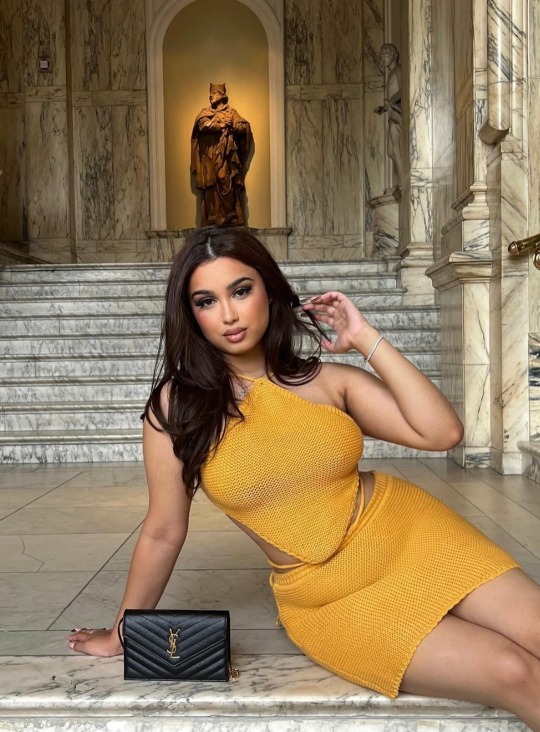#british bengali
Photo







Joy Crookes for Net-A-Porter (ph: Tami Aftab)
#joy crookes#joycrookesedit#tami aftab#wonderfulwoc#glamoroussource#dailymusicqueens#dailymusicians#british asian#southasianrep#dailywomanedit#dailywomansource#flawlessbeautyqueens#british bengali#neo soul#popularculltures#dailywoc#pocedit#pocsource
143 notes
·
View notes
Text

Devdas (2002) dir. Sanjay Leela Bhansali
#source: historical beauty lily#period drama#devdas#aishwarya rai#parvati#Paro#bengali saree#bollywood#hindi cinema#19th century#1900s#white#red#british raj#perioddramaedit#edit#sanjay leela bhansali#india#indian cinema#gold#saree#sari#indian fashion
51 notes
·
View notes
Text
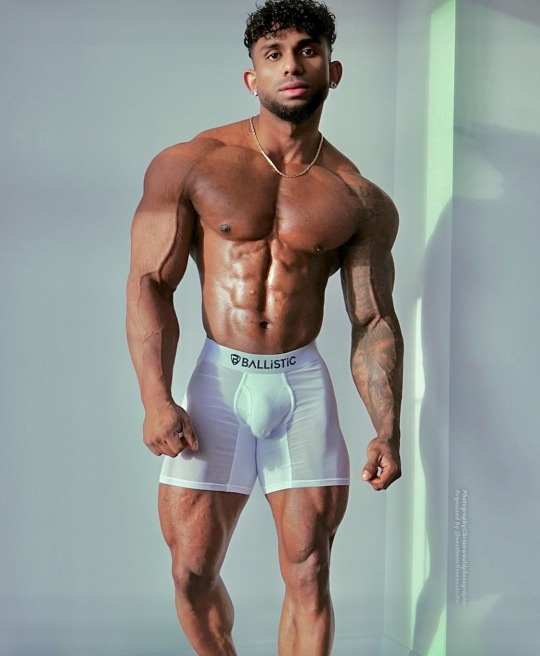
ഹൊസെയാ ഫെര്നാംഡെസ്൨൩൦൪൦൯
Hosea and his thigh-enhancing crotch-sock
#hosea fernandez#bengali british beauty boy#desi thighs#thigh worship#massive thighs#massive men#thick thighs#bengali superbody#thighs thick enough to fuck#desi superbody#desi muscle worship#cool crotchwear
38 notes
·
View notes
Text
it’s so fucked up that the catholic church exists. im sorry jewish people
#just remembered the history of the bagel...#and also im reading a paper about jewish american ethnolects/language variation#but like mostly thinking about the history of the bagel#bc like wow it would be so fucked if someone banned making rice#wait.#<- remembered that the british caused the bengali famine#LOL.#personal post
23 notes
·
View notes
Text
okay race is weird for me right. my race not race in general.
i'm biracial - i am white and asian, greek and bengali however you want to put it
but i'm white-passing
so i feel guilty for taking part in my bengali heritage and culture. i feel like some kind of fraud and i feel alienated as shit. i can't speak the language, i don't know the music that well save for what my mum shows me, hell i dont even look like my bengali family
i hate it. sure i get white privilege and i realise that it's a huge thing (and i fucking hate that it is such a huge thing) but a lot of times i really wish that i at least looked biracial. that people could look at me and see both sides of my culture without me having to somehow prove it.
i feel so awkward wearing saris and shalwar kameez and eating bengali food and listening to the music and talking to the people because i feel like some sort of foreigner to my own identity even though i love that side of myself i love being bengali i love the culture i love all of it and it's mine it's my culture. but it doesn't fucking feel like it.
when i go out to eat with my mum and on occasion her friends to south asian restaurants in general and i sit down and order food i always feel so alien. i'll get looks from people sitting around us. my mum and her friend(s) will talk to the waiter in bengali or hindi or a mutual language and when they turn to me they'll switch to english without even asking if i know the language. even if they're speaking english in the first place there'll be a clear difference to how they treat my mum who looks bengali because she is only bengali and me, who is biracial.
and every time i speak about being south asian someone will look at me funny. every time i wear my culture's clothes to cultural day at school i will get looked at funny. people will smile and clap and ooh and aah just because i know the most basic of things about my culture, like the famous actors, or certain foods that even the most sheltered of people who aren't south asian would have at least heard about (like biriyani, or chicken/fish/insert meat here korma).
i will never be given the chance to truly feel like i am bengali. just because i don't look the part.
#anyway yeah i've been uncomfortable about this and noticed it my whole life#not even as a young kid did i ever feel truly at home in my culture#i always felt like i was perceived as greek and nothing more to even my grandparents on my mum's side#too british for my greek family too greek for my bengali family#that's how i've felt my whole life.#i hate it.
3 notes
·
View notes
Text
so mad i grew up with no connection to half of my culture
#my mothers side is licherallt just british/irish and my fathers side is largely pakistani & bengali#tho at least the most recent couple generations grew up in mauritius#and its so frustrating bc i got cut off from them from a young age so i have no connection to the culture at all#^ went down a rabbit hole earlier and :( im so sad abt it#i remember bits and pieces of my childhood but DAMN IDK i just wish i didnt feel like a stranger to it all now#late night rambles w val :/ i need 2 SLEEP#valentina talks#help internet safety who
4 notes
·
View notes
Photo
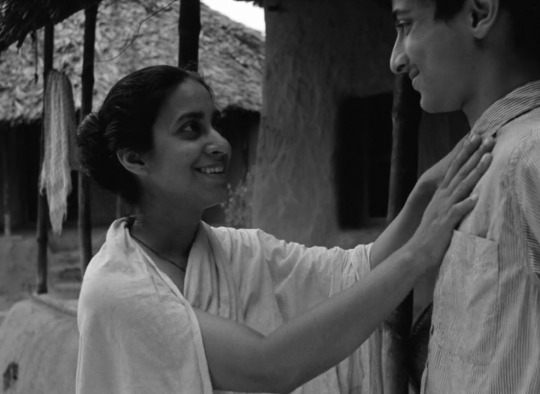
Karuna Banerjee and Smaran Ghosal in Aparajito (1956)
dir. Satyajit Ray
#aparajito#the unvanquished#aparajito 1956#apu trilogy#the apu trilogy#satyajit ray#karuna banerjee#karuna bannerjee#smaran ghosal#british cinema#indian cinema#bengali cinema#films#movies#film scenes#movie scenes#screencaps#cinematography#indian films#indian actress#indian movies#parallel cinema
3 notes
·
View notes
Text
eta ki hocche 😭😭
4 notes
·
View notes
Text
VANISHING ENGLISH THEATRE & the Emerging Bengali Stage in Renaissant Calcutta
Prince of Wales’s Box at the English Theatre. Calcutta. 1875. Courtesy Getty’s
Backdrop
British ex-pats built ‘Town Calcutta’ replicating London to continue to live in an exclusive English style, shutting out the natives of the land. It may appear a hard saying, yet the fact remains that, even for the natives, Calcutta was an artificial place of residence [Firminger]. The Britishers were…
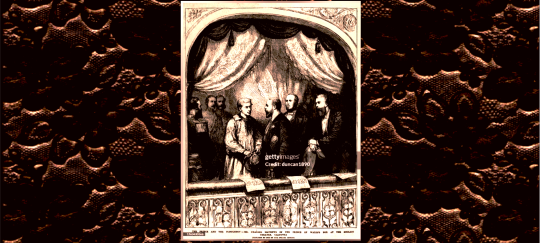
View On WordPress
#Amateur Dramatic Society#Augustus Hicky#Baishnav Charan Auddy#barnaby brittle#bengali stage#Bishop Carew#Bishop’s House#british culture#C.H. Tawney#calcutta theatre#Captain Richardson#Charles Mathews#Charles Metcalf Plowden#chowringhee theatre#college of St. John#David Lester Richardson#democratic theatre#derozians#Dramatic and Burlesque and Ballet Company#Dramatic Performances Act#Dumdum Garrison Theatre#Dwarkanath Tagore#East India Company#Emily Eden#emma robert#english theatre#esther leach#George Chinnery#George Lewis#George Williamson
0 notes
Text
VANISHING ENGLISH THEATRE & the Emerging Bengali Stage in Renaissant Calcutta
Prince of Wales’s Box at the English Theatre. Calcutta. 1875. Courtesy Getty’s
Backdrop
British ex-pats built ‘Town Calcutta’ replicating London to continue to live in an exclusive English style, shutting out the natives of the land. It may appear a hard saying, yet the fact remains that, even for the natives, Calcutta was an artificial place of residence [Firminger]. The Britishers were…

View On WordPress
#Amateur Dramatic Society#Augustus Hicky#Baishnav Charan Auddy#barnaby brittle#bengali stage#Bishop Carew#Bishop’s House#british culture#C.H. Tawney#calcutta theatre#Captain Richardson#Charles Mathews#Charles Metcalf Plowden#chowringhee theatre#college of St. John#David Lester Richardson#democratic theatre#derozians#Dramatic and Burlesque and Ballet Company#Dramatic Performances Act#Dumdum Garrison Theatre#Dwarkanath Tagore#East India Company#Emily Eden#emma robert#english theatre#esther leach#George Chinnery#George Lewis#George Williamson
0 notes
Text
the way victorie and robin and ramy all loose their birth languages has me in shambles. victorie never really spoke hatian creole, she moved to france at a very young age, and when she tried to bring it into babel, she was dismissed. ramy, who’s from kolkata, who’s bengali, only speaks bengali once in the book and his speech has become rudimentary because the british saw urdu and sanskrit and arabic as more valuable. robin has forgotten cantonese by the time he goes back home for the same reason. it’s utterly tragic it comes with a deep pain that’s hard to describe the pain of loosing your mother tongue.
#kolkata is how it’s spelled now btw. idk if ppl know that#babel#babel an arcane history#rf kuang#robin swift
2K notes
·
View notes
Text
I can’t write anything in any languages because I am very stupid but one thing I can write about is the realisation in my early twenties around the limitations of English because when you grow up surrounded by English as a primary language you are told so often that it is the language of the greatest writers of all time, that it is the language of poetry and novels etc.
And I think it’s very easy to buy into that because of the hype around some of our great writers who are really… great!
But then! You start to learn about the world lmao. You start to learn about the precision of Polish prose in novels and the very deliberate ways of communication in plays that are so much more rigorous than the English conventions. You watch a play in the original Norwegian and realise there’s all this tonal play happening that you missed in English. You start to read Russian novels where people talk three different languages to denote social class and communication styles. You start to notice a particular kind of narrative convention in Swedish novels and Colombian novels that aren’t in British novels and you start to wonder how much more you’re missing in translation. You learn of the term “anglosphere” that East Asian authors use to describe the very limited rules that the UK and America have put onto storytelling, and how Bengali has a formal language that exists solely for poetic expression and philosophical thought that has almost never been properly translated into English because it can’t be.
And then you remember there’s a word in your own family’s language in the UK which has no direct translation to English too.
#read in translation lol and marvel at the world of translators for real but also#go see plays you know well in their original language and find a whole new layer of aural play
72 notes
·
View notes
Text
that one line about ramy's bangla being rudimentary made me absolutely sob (i'm bengali) and i wanna talk about why
there's so much to it both contextually with ramy's character as well as historically. contextually because ramy is fluent in 6 languages, an insane number of languages for one person but none of which are his mother tongue. he's described as a performer, one who knows he can't blend in so instead he stands out as a means to escape as much of the racism as he can. he gets lost in it that he almost forgets who he is; this is reflected in his language ability too – he gets so lost in his linguistic academics he just barely remembers the native language of his home place that he adores.
and honestly, you can't even really blame ramy for it at all when it was induced. it's the british who saw urdu, arabic and persian as more valuable than bangla, it's the british that make ramy put on this act so he can literally stay alive. and when you know the historical relevancies between urdu and bangla, it hurts so much that ramy was forced to forget bangla
very brief history context: after the partition, where british india was split into india, pakistan and east pakistan (now bangladesh) bangla was seen as inferior to urdu due to its hindu connections. bengalis experienced so much shit because of this (and bengali muslims are still dealing with the internalised cultural racism today honestly). pakistanis tried to make the official language urdu, even though literally everyone in east pakistan were bengali and spoke bangla, so bengalis fought back against it. we still celebrate that day today (feb 21)
so to have ramy be in this position in the 1830s where urdu was seen as superior to bangla, especially when ramy is a bengali muslim, is just extremely accurate?? and maybe it's bc we don't have much western literature where we talk about this but it's just so nice to have it acknowledged
the bangla language movement didn't happen until around the 1950s, over a century after babel's timeline, but the seeds are always there. while i do think it comes with both this islamic superiority tendency a lot of asians have (arabs i'm looking at you) and britian's imperialistic racism, i just love how it all makes sense
#babel rf kuang#ramiz rafi mirza#i'm still learning a lot abt my own culture so don't ask me for a lot of information about this lol#yk when i found out ramy was bengali it set my world off its course and i knew i had to read this book even if no bangla was discussed#i knew i was gonna get attached to him and I DID!#he just means so much to me and while he made me sob multiple times i love what kuang did with his character#also if youre pakistani lol don't try to defend yourself#you don't get to after pakistanis massacred so many bengalis during the bangladesh liberation war#babel an arcane history#babel or the necessity of violence#also i love seeing south asian characters become fandom favourites i know most babel lovers love ramy IKTRRR
123 notes
·
View notes
Note
I love seeing Indian!Harry, but I've never seen one where he's depicted as being a Bengali Indian, so I'd like to request a Drarry prompt where Harry learns of his heritage. If you decide to take on this prompt, thank you 💖💕
His cousins have promised that no one is going to make fun of his accent or his eyes or that he uses Latin spells instead of Sanskrit, but Harry doesn't believe them.
Saayoni had promised to curse anyone who tried. That he does believe.
It's too bad he hadn't known his cousins growing up. She's way scarier than Dudley ever managed to be.
"You're being nervous over nothing," Draco says, midway between dismissive and comforting and coming across as neither.
"Easy for you to say," he grumbles, smoothing his hands down the front of his kurta. It's gold and his doti is red. The colors won't mean anything to anyone else, but he like going into this with something familiar. "It's a four day festival and I only sort of know what I'm doing."
They've dragged him along to other festivals, but this is different. Somehow. He wants to blame it on Durga Puja being a bigger festival, but mostly it's just because he's meeting his cousins' friends and he doesn't want them to hate him or look down on him and there's nothing he can really do about that.
"I'll come if you want," Draco offers, not for the first time. His Bengali isn't as good as Harry's but Achintya thinks he's hilarious, which seems to make up for it. "But I don't think bringing your white, British boyfriend with you will help if you're trying to blend in."
"I'm also British," Harry says, but he knows what Draco means. "No, it's okay. I'll send a patronus if I need a rescue."
Draco snorts, but dutifully gets up to kiss him goodbye and shove him towards the fireplace.
#thank you for your help!! i really appreciate it <3#asks#soullesscadmium#harry potter#prompt answers
460 notes
·
View notes
Text
A walk through Bengal's architecture
Bengali architecture has a long and rich history, fusing indigenous elements from the Indian subcontinent with influences from other areas of the world. Present-day Bengal architecture includes the nation of Bangladesh as well as the Indian states of West Bengal, Tripura, and Assam's Barak Valley. West Bengal’s architecture is an amalgamation of ancient urban architecture, religious architecture, rural vernacular architecture, colonial townhouses and country houses, and modern urban styles. Bengal architecture is the architecture of Wind, Water, and Clay. The Pala Empire (750–1120), which was founded in Bengal and was the final Buddhist imperial force on the Indian subcontinent, saw the apex of ancient Bengali architecture. The majority of donations went to Buddhist stupas, temples, and viharas. Southeast Asian and Tibetan architecture was influenced by Pala architecture. The Grand Vihara of Somapura, which is now a UNESCO World Heritage Site, was the most well-known structure erected by the Pala rulers.

The Grand Vihara of Somapura
According to historians, the builders of Angkor Wat in Cambodia may have taken inspiration from Somapura. Bengal architecture became known for its use of terracotta due to the scarcity of stone in the area. Clay from the Bengal Delta was used to make bricks.
The temple architecture has distinct features like the rich wall decoration, often known as the terracotta temples, which was one of the remarkable elements of Bengali temple architecture. The double-roofed architecture of thatched huts was replicated by Bengali temples. Square platforms were used to construct the temples. Burnt brick panels with figures in geometric patterns or substantial sculptural compositions served as the temples' adornment.

Dochala style
These served as models for many temples that were built in undivided Bengal. Construction materials used in ancient times included wood and bamboo. Bengal has alluvial soil, so there isn't a lot of stone there. The bricks that were utilized to build the architectural components were made from stone, wood, black salt, and granite. Bengal has two different types of temples: the Rekha type, which is smooth or ridged curvilinear, and the Bhadra form, which has horizontal tiers that gradually get smaller and is made up of the amalaka sila. Mughal architecture, including forts, havelis, gardens, caravanserais, hammams, and fountains, spread throughout the area during the Mughal era in Bengal. Mosques built by the Mughals in Bengal also took on a distinctive regional look. The two major centers of Mughal architecture were Dhaka and Murshidabad. The do-chala roof custom from North India was imitated by the Mughals.

Jorasako thakurbari
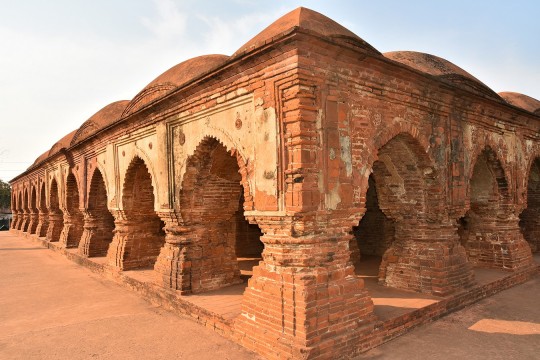
The Rasmancha is a heritage building located at Bishnupur, Bankura district, West Bengal.
Influence of the world on Bengal architecture: Although the Indo-Saracenic architectural style predominated in the area, Neo-Classical buildings from Europe were also present, particularly in or close to trading centers. While the majority of country estates had a stately country house, Calcutta, Dacca, Panam, and Chittagong all had extensive 19th and early 20th-century urban architecture that was equivalent to that of London, Sydney, or other British Empire towns. Calcutta experienced the onset of art deco in the 1930s. Indo-Saracenic architecture can be seen in Ahsan Manzil and Curzon Hall in Dhaka, Chittagong Court Building in Chittagong, and Hazarduari Palace in Murshidabad.
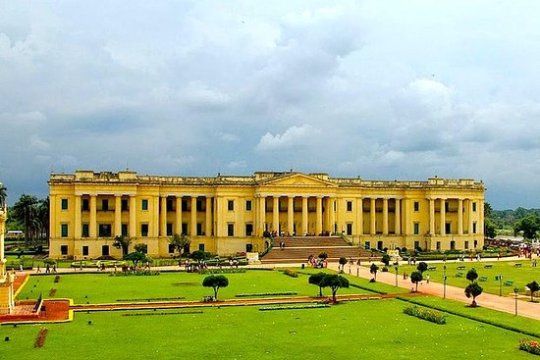
Hazarduari Palace in Murshidabad
The Victoria Memorial in Kolkata, designed by Vincent Esch also has Indo-Saracenic features, possibly inspired by the Taj Mahal. Additionally, Kolkata's bungalows, which are being demolished to make way for high-rise structures, have elements of art deco. The 1950s in Chittagong saw a continuation of Art Deco influences. The Bengali modernist movement, spearheaded by Muzharul Islam, was centered in East Pakistan. In the 1960s, many well-known international architects, such as Louis Kahn, Richard Neutra, Stanley Tigerman, Paul Rudolph, Robert Boughey, and Konstantinos Doxiadis, worked in the area.

The Jatiyo Sangshad Bhaban
This iconic piece of contemporary Bangladeshi architecture, was created by Louis Kahn. Midsized skyscrapers dominate the cityscapes of contemporary Bengali cities, which are frequently referred to as "concrete jungles." With well-known architects like Rafiq Azam, architecture services play a key role in the urban economies of the area. Overall Bengal architecture was influenced by various contemporaries of their time and continues to evolve.

Gothic architectural style seen in St. Paul's Cathedral in Kolkata.

Zamindar era buildings in ruin.

Belur Math in Howrah
#bengali#bangla#west bengal#bangladesh#tripura#assam#desi#বাংলা#india#architecture#tales#bengal architecture#history#kolkata#international#technology#information#temple#asia#bricks
171 notes
·
View notes
